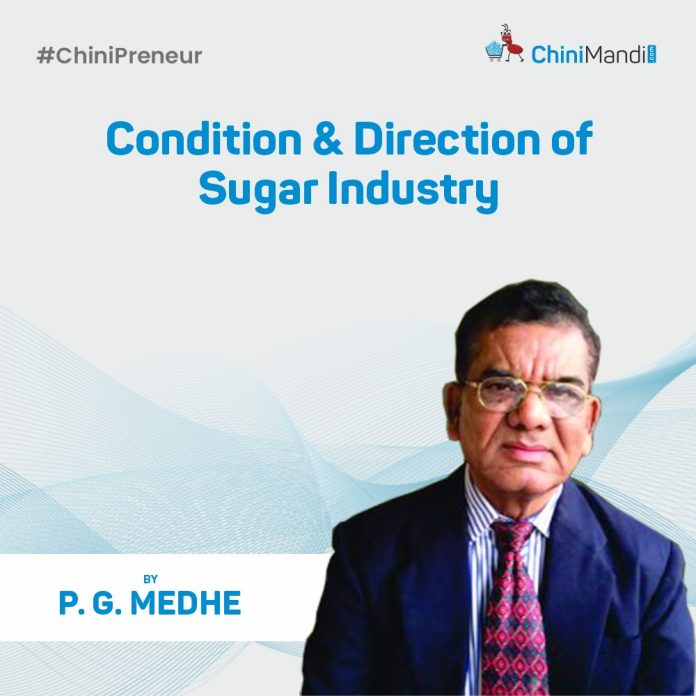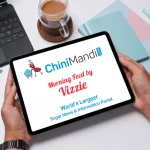In order to make available more raw material in the form of Sugar cane juice, Syrup, B Heavy molasses for the production of Ethanol and speed up the ethanol blending program, the real need is to enhance the productivity of the land utilised for cane cultivation. To enhance the productivity of land utilized for sugarcane cultivation and thereby increase the availability of raw material for ethanol production, several strategies can be implemented.
Designing a comprehensive plan for increasing land productivity around the country involves several key elements. Here’s a detailed breakdown item-wise:
1) Consolidated Farming Approach : Identify the land parcels within the every village and establish partnerships or agreements with landowners for consolidated farming. Pool resources, including labor, machinery, and inputs, to maximize efficiency and economies of scale.
2) Mechanization Implementation: Invest in modern agricultural machinery such as tractors, plows, cultivators, and seeders for efficient land preparation and cultivation. Utilize specialized machinery like harvesters for cane cutting to increase speed and reduce labor costs.
3) Irrigation Scheme: Conduct a thorough assessment of the water resources available and invest in irrigation infrastructure as needed. Implement a well-designed irrigation scheme utilizing techniques such as drip irrigation to ensure optimal water usage and minimize water wastage.
4) Cane Variety Planning : Collaborate with agricultural experts to identify high-yielding and disease-resistant varieties of sugarcane suitable for the local climate and soil conditions. Implement a structured planting plan to optimize yield and ensure continuous cane supply to the nearby sugar factory throughout the harvesting season.
5) Soil Health Management : Conduct regular soil testing to assess nutrient levels and pH balance. Implement a soil fertility management program, including the application of organic compost and appropriate fertilizers, to maintain soil health and productivity.
6) Crop Rotation and Diversification: Develop a crop rotation plan to minimize soil depletion and pest infestations. Explore opportunities for diversification by introducing complementary crops such as legumes or cover crops to improve soil structure and fertility.
7) Training and Education : Provide training and extension services to farmers on modern agricultural practices, machinery operation, and crop management techniques. Encourage the adoption of best practices through farmer field schools, demonstration plots, and knowledge-sharing platforms.
8) Monitoring and Evaluation: Establish robust monitoring and evaluation mechanisms to track key performance indicators such as yield, input usage, and cost-effectiveness. Use data-driven insights to continuously refine and optimize the farming plan for maximum productivity and profitability.
9) Harvesting Techniques: Introduce mechanical harvesters to replace manual cane cutting. Train operators on safe and efficient harvester usage.
Subsidize the cost of hiring or purchasing harvesters for farmers.
10) Promote organic farming: Promote organic farming practices and the use of natural fertilisers to improve soil fertility.
11) Market Linkages : Facilitate access to markets for selling cane and other agricultural produce. Establish partnerships with agro-industries for guaranteed purchase agreements. Provide market information and price forecasting to help farmers make informed decisions.
12) Importance of easy availability of agri inputs required for sugar cane crop for enhancement of land productivity
Easy availability of agricultural inputs required for sugar cane cultivation plays a crucial role in enhancing land productivity for several reasons:
a) Timely Application: Access to inputs such as seeds, fertilizers, and pesticides ensures that farmers can apply them at the right time during the crop cycle, maximizing their effectiveness and yields. For this purpose there is a need of equal distribution system of fertilisers on the basis of land under cultivation.
b) Quality Assurance: Easy availability ensures that farmers have access to high-quality inputs, which are essential for optimal crop growth and productivity.
c) Optimal Resource Allocation: When inputs are readily available, farmers can allocate their resources more efficiently, focusing on other aspects of cultivation, such as irrigation and crop management, leading to improved productivity.
d) Risk Mitigation: Adequate availability of inputs reduces the risk of crop failure due to factors such as pest infestations, nutrient deficiencies, or disease outbreaks, thereby safeguarding farmers’ incomes and ensuring food security.
e) Cost-effectiveness: Easy access to inputs can lower transaction costs for farmers, as they can purchase them locally without incurring additional expenses related to transportation or middlemen, making cultivation more economically viable.
f) Innovation and Adoption: Availability of modern agricultural inputs encourages farmers to adopt innovative techniques and technologies that can further enhance land productivity, such as mechanization or precision farming practices.
Overall, ensuring easy availability of agricultural inputs for sugar cane cultivation is essential for maximizing land productivity, improving farmers’ livelihoods, and meeting the growing demand for sugar an
13) Appropriate Provisions of pesticides for sugar cane crop to avoid detonation of the crop in turn reduction in yield of the land
To avoid the detrimental effects of pesticides on sugarcane crops and minimize yield reduction, farmers should consider the following provisions:
a) Integrated Pest Management (IPM): Implement IPM strategies that emphasize the use of multiple pest control methods, including biological control, cultural practices, and judicious use of pesticides.
b) Selective Pesticide Use : Choose pesticides that specifically target the pests affecting sugarcane while minimizing harm to beneficial organisms and the environment.
c) Proper Application Techniques : Ensure proper application techniques to minimize drift and runoff, thereby reducing the risk of pesticide contamination of water sources and non-target areas.
d) Timing of Application: Apply pesticides at the appropriate stage of pest development or crop growth to achieve maximum efficacy while minimizing adverse effects on beneficial insects and pollinators.
f)Regular Monitoring: Regularly monitor pest populations and crop health to detect pest outbreaks early and intervene with appropriate control measures before they become a threat to crop yield.
g) Rotational Pest Management: Rotate pesticides with different modes of action to prevent the development of pesticide resistance in pest populations.
h) Training and Education: Provide farmers with training and education on safe pesticide handling, storage, and disposal practices to minimize risks to human health and the environment.
By adhering to these provisions, farmers can effectively manage pests in sugarcane crops while minimizing the risk of yield reduction and environmental damage associated with pesticide use.
14) Importance of inter cropping in the sugar cane crops to reduce the cost of production of sugar cane by creating additional income
Intercropping in sugarcane cultivation offers several benefits:
a) Diversified Income: By intercropping with compatible crops like legumes or vegetables, farmers can generate additional income from the same land.
b) Reduced Input Costs: Intercropping helps in optimizing the use of resources such as water, fertilizers, and pesticides, thus reducing the overall cost of production.
c) Improved Soil Health: Intercropping with nitrogen-fixing legumes can enhance soil fertility, reducing the need for synthetic fertilizers and improving long-term sustainability.
d) Weed and Pest Management: Intercropping can naturally suppress weed growth and reduce pest infestations, leading to lower expenditure on herbicides and pesticides.
e) Risk Mitigation : Diversifying crops reduces the risk associated with fluctuations in market prices or weather conditions, providing a buffer against crop failure and income loss.
Overall, intercropping in sugarcane cultivation not only reduces the cost of production but also enhances farm profitability and sustainability.
15) Need of Planning for establishing sugar cane seed plot at the factory own land for supplying quality seeds to farmers
Establishing a sugar cane seed plot requires careful planning to ensure quality seed supply to farmers. Key considerations include:
a)Site Selection: Choose land with suitable soil conditions, irrigation facilities, and access to resources like water and fertilizer.
b) Seed Variety Selection : Select high-yielding, disease-resistant sugar cane varieties suited to the local climate and soil conditions.
c) Seed Procurement: Source quality seeds from reputable suppliers or research institutions to ensure genetic purity and vigor.
d) Land Preparation: Prepare the land by clearing weeds, leveling the ground, and ensuring proper drainage for optimal seedling growth.
e) Infrastructure : Set up necessary infrastructure such as irrigation systems, shade nets, and storage facilities for seeds and equipment.
f) Seedling Production : Establish a nursery for seedling production using healthy, disease-free planting material. Monitor seedling growth and health regularly.
g) Quality Control : Implement strict quality control measures to monitor seed purity, germination rates, and disease resistance.
h) Training and Extension: Provide training and extension services to farmers on seedling management, disease control, and best agricultural practices.
I) Marketing and Distribution : Develop a marketing strategy to promote quality seeds to farmers and establish distribution channels for seed supply.
j) Monitoring and Evaluation : Regularly monitor the performance of the seed plot and evaluate its impact on farmers’ yields and income. Adjust plans as needed based on feedback and outcomes.
By planning meticulously and implementing these steps effectively, you can establish a successful sugar cane seed plot to supply high-quality seeds to farmers, ultimately contributing to improved agricultural productivity and livelihoods.
16) Importance of increasing seed replacement ratio for sugar cane plantation for achieving the enhancement in land productivity
Increasing the seed replacement ratio for sugar cane plantation is crucial for enhancing land productivity for several reasons:
a) Improved Genetics : Higher seed replacement ratios mean newer, higher-yielding varieties of sugar cane can be introduced, which are often bred for disease resistance, climate resilience, and higher sugar content. This can lead to increased yields per hectare.
b) Better Disease Resistance : By replacing older, susceptible varieties with newer ones, the risk of disease outbreaks can be reduced, thus safeguarding the productivity of the land over time.
c) Increased Yield Potential : Newer varieties often have better agronomic traits such as faster growth rates, higher biomass production, and increased sugar content, resulting in higher yields per unit area.
d) Sustainability : Higher seed replacement ratios can help maintain soil fertility and prevent degradation by reducing the need for excessive use of fertilizers, pesticides, and other agrochemicals.
f) Adaptation to Climate Change : Newer varieties may be bred to withstand the effects of climate change, such as drought or increased pest pressures, thereby ensuring more stable yields even under adverse conditions.
g) Economic Benefits : While there may be initial costs associated with purchasing new seeds, the potential increase in yields and overall productivity can lead to greater economic returns for farmers in the long run.
Overall, increasing the seed replacement ratio for sugar cane plantation is essential for achieving sustainable enhancements in land productivity, ensuring food security, and supporting the livelihoods of farmers.
17) Selection of trial plot for achieving targeted yield from the land utilised for sugar cane plantation
Selecting trial plots to achieve targeted yields from land utilized for sugar cane plantation involves several steps:
a) Land Assessment : Assess the soil quality, fertility, drainage, and other factors that affect sugar cane growth. This could involve soil testing and analysis.
b) Targeted Yield Determination: Define the targeted yield per acre or hectare based on factors like climate, variety of sugar cane, market demand, and economic considerations.
c) Experimental Design: Determine the experimental design for the trial plots. This could include factors such as plot size, replication, randomization, and treatment allocation.
d) Variable Selection : Identify the key variables to test in the trial plots. This might include different sugar cane varieties, fertilizer regimes, irrigation methods, pest and disease management strategies, etc.
f) Plot Selection : Randomly select or strategically allocate plots within the sugar cane plantation area to represent different treatments or combinations of treatments. Ensure that the selected plots are representative of the overall land characteristics.
g)Plot Preparation : Prepare the selected plots by clearing weeds, tilling the soil, and applying any necessary pre-planting treatments or amendments.
g) Planting : Plant sugar cane in the trial plots according to the predetermined experimental design and planting schedule.
g) Management and Monitoring : Throughout the growing season, implement the planned management practices (e.g., irrigation, fertilization, pest control) and monitor the trial plots regularly for growth, health, and any issues that may arise.
h) Data Collection : Collect relevant data on parameters such as plant height, leaf area, stem diameter, number of tillers, pest and disease incidence, and yield components (e.g., tonnage, sugar content) as per the experimental design.
i) Analysis and Interpretation : Analyse the collected data using appropriate statistical methods to assess the effects of different treatments on sugar cane growth and yield. Interpret the results to determine which treatments are most effective in achieving the targeted yield.
j) Recommendations : Based on the trial results, make recommendations for management practices and treatments to optimize sugar cane yield on the entire plantation area.
k) Implementation : Implement the recommended practices on a larger scale across the entire sugar cane plantation to achieve the
19) Season wise and sugar cane variety wise scientific Harvesting and Transport programme for achieving more yield form land utilised for cane plantation
Developing a season-wise and sugar cane variety-wise scientific harvesting and transport program requires a comprehensive approach. Here’s a general framework:
a) Variety Selection : Choose sugar cane varieties based on soil type, climate, and market demand. Varieties with high sucrose content and disease resistance should be preferred.
b) Seasonal Planning: Pre-season: Prepare the land by plowing, leveling, and applying necessary fertilizers.
c) Planting : Plant cane at the beginning of the optimal planting window for each variety and region.
d) Crop Care: Implement a schedule for irrigation, weed control, and pest management throughout the growing season.
e) Harvesting Techniques : Determine the maturity of the cane by Brix measurement or visual observation. Opt for mechanized harvesting methods like chopper harvesters or combine harvesters for efficiency and reduced labor costs. Train workers in proper cutting techniques to minimize losses and maximize yield.
f) Transportation Plan : Coordinate with transportation providers to ensure timely delivery of harvested cane to processing facilities. Optimize transportation routes to minimize transit time and costs. Use appropriate loading and unloading techniques to prevent damage to the cane during transit.
g) Post-Harvest Handling : Implement rapid transport from the field to the processing facility to minimize sucrose loss. Store harvested cane in shaded, well-ventilated areas to prevent deterioration. Maintain hygiene and cleanliness during transportation to prevent contamination and mold growth.
h) Monitoring and Evaluation : Regularly monitor the effectiveness of the harvesting and transportation program. Collect data on yield, transportation costs, and quality parameters like sucrose content. Adjust the program based on feedback and performance to continually improve efficiency and productivity.
I) Research and Development : Invest in research to identify new varieties with higher yields and better resistance to pests and diseases. Explore innovative harvesting and transportation technologies to further optimize the process.
By implementing a well-planned and scientifically informed harvesting and transportation program, you can maximize yield from your cane plantation while minimizing costs and environmental impact.
20) Scientific water management for increasing the yield of the land utilised for sugar cane plantation
Scientific water management techniques can significantly enhance sugar cane yields. Here are some strategies:
a) Drip Irrigation : Delivering water directly to the roots minimizes water wastage and optimizes water usage.
b) Soil Moisture Monitoring: Utilise sensors to track soil moisture levels, ensuring irrigation is applied only when necessary to avoid overwatering.
c) Mulching : Applying mulch helps retain soil moisture, reducing water evaporation and maintaining optimal soil moisture levels for sugar cane growth.
d) Rainwater Harvesting : Collecting rainwater for irrigation reduces reliance on groundwater and surface water sources, providing a sustainable water supply for sugar cane cultivation.
e) Water Recycling : Implement systems to capture and recycle water from processing facilities for irrigation, minimizing water usage and waste.
f) Precision Irrigation : Employing technology such as remote sensing and computerized irrigation systems enables precise water application, matching irrigation to the specific needs of sugar cane plants.
g) Crop Rotation and Cover Crops: Utilise crop rotation and cover crops to improve soil structure and water retention capacity, enhancing overall water management on the plantation.
h) Water-Saving Cultivation Techniques : Adopting practices like minimum tillage and contour farming helps reduce soil erosion and water runoff, preserving soil moisture for sugar cane growth.
By implementing these scientific water management techniques, sugar cane plantations can optimize water usage, reduce environmental impact, and increase yield potential.
21) Provision of Sufficient cheap funds for the sugar cane development programs to achieve increased land fertility
To ensure increased land fertility in sugar cane development programs, it’s crucial to provide sufficient, affordable funds. This could involve subsidizing agricultural inputs like fertilizers, irrigation systems, and improved seeds, as well as offering low-interest loans to farmers. Additionally, investing in research and extension services can help disseminate best practices for sustainable land management and fertility enhancement.
22) Preservation of the increased land productivity utilised for cane cultivation.
Preserving increased land productivity utilized for cane cultivation involves several strategies:
a) Crop Rotation: Rotate sugarcane with other crops to prevent soil depletion and maintain soil fertility. This can include legumes or cover crops that fix nitrogen, replenishing nutrients in the soil.
b) Soil Conservation: Implement soil conservation techniques such as contour plowing, terracing, and mulching to prevent erosion and maintain soil structure.
c) Irrigation Management : Efficient water management practices, such as drip irrigation or scheduling irrigation based on crop needs, can optimize water use and prevent waterlogging or salinization.
d) Integrated Pest Management (IPM): Adopt IPM practices to control pests and diseases effectively while minimizing the use of chemical pesticides, thus reducing environmental impact.
Mr. P.G. Medhe is the former Managing Director of Shri Chhatrapati Rajaram Sahakari Sakhar Karkhana Ltd and sugar industry analyst. He can be contacted at +91 9822329898.












